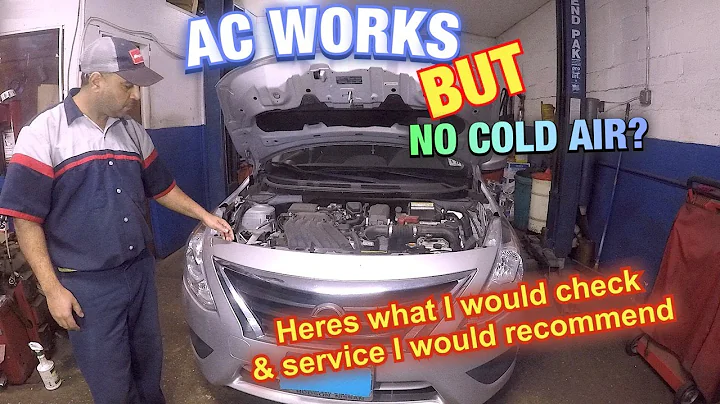Fix Your Small Engine's Pull Start Recoil Spring with Ease
Table of Contents
- Introduction
- Understanding the Issue
- Common Problems with Small Engines
- Importance of a Properly Functioning Starter Spring
- Tools and Materials Needed
- Step-by-Step Guide
4.1 Identifying the Direction of the Spring
4.2 Preparing the Spring for Winding
4.3 Using Wire Ties for Easy Handling
4.4 Winding the Spring with a Drill
4.5 Ensuring the Size is Appropriate
4.6 Placing the Spring in the Housing
4.7 Attaching the Screw
4.8 Repeat Steps if Necessary
- Tips and Troubleshooting
- Conclusion
- Frequently Asked Questions (FAQs)
🔧 Introduction
Are you having trouble with your small engine's starter spring? Is it affecting the smooth operation of your chainsaw or lawn mower? Worry not, as this step-by-step guide will help you fix the issue and get your small engine back up and running in no time. In this article, we will walk you through the process of winding and installing a starter spring, ensuring that your pull-start mechanism functions effectively.
🔎 Understanding the Issue
Before we delve into the solution, let's explore the common problems associated with small engines and the importance of a properly functioning starter spring. Small engines, such as those found in chainsaws and lawn mowers, rely on a pull-start mechanism to initiate the ignition process. A key component of this mechanism is the starter spring, which stores potential energy and releases it to rotate the engine's crankshaft.
🔧 Tools and Materials Needed
To tackle this task, you will need the following tools and materials:
- Screwdriver
- Drill with a screw attachment
- Wire ties
- Pliers (optional)
📝 Step-by-Step Guide
Follow these steps to wind and install your starter spring correctly:
4.1 Identifying the Direction of the Spring
Begin by inspecting the existing spring and noting its orientation within the housing. This step is crucial as it determines the direction in which you need to wind the spring.
4.2 Preparing the Spring for Winding
Hold the spring firmly, securing one end between your fingers. Make sure the other end is sticking out slightly, providing space for the winding process.
4.3 Using Wire Ties for Easy Handling
To simplify the task and avoid fumbling with the spring and a heavy drill, use wire ties. Wrap the wire tie around the spring, keeping it loose enough to fit into the housing.
4.4 Winding the Spring with a Drill
Attach the spring to a drill by inserting the screw into the spring's open end. Carefully wind the spring using the drill, exerting moderate tension. Avoid overtightening, as it may cause difficulties during installation.
4.5 Ensuring the Size is Appropriate
Check the size of the wound spring to ensure it will fit into the housing properly. It should be small enough to fit without forcefully squeezing it in.
4.6 Placing the Spring in the Housing
Gently insert the spring into the housing, aligning it with any notches or grooves as necessary. If the spring is too tight, use pliers to slowly bend it outwards for easier installation.
4.7 Attaching the Screw
Secure the spring in place by inserting the screw into its designated hole. Exercise patience during this step, as it may require some adjustments and multiple attempts.
4.8 Repeat Steps if Necessary
If the spring does not fit properly or the recoil action is not smooth, you may need to repeat the above steps. Don't get discouraged; this process often requires some trial and error.
💡 Tips and Troubleshooting
- Lubricate the spring with a light machine oil to reduce friction and ensure smoother operation.
- If the spring continues to give you trouble, consider replacing it with a new one to guarantee optimal functionality.
✅ Conclusion
With a little patience and the right approach, resolving issues with your small engine's starter spring can be a fairly straightforward task. By following the step-by-step guide outlined in this article, you will be able to wind and install the spring correctly, ultimately restoring the proper functioning of your chainsaw, lawn mower, or other pull-start small engine.
❓ Frequently Asked Questions (FAQs)
Q: How do I know if my starter spring is faulty?
A: A faulty starter spring may exhibit signs such as difficulty in pulling the starter cord, a weak recoil action, or complete failure to start the engine.
Q: Can I reuse the existing starter spring, or should I replace it?
A: If the spring is still in good condition and only requires rewinding, you can reuse it. However, if it shows signs of wear or damage, it is advisable to replace it with a new one.
Q: Are there any safety precautions I should take while working on small engines?
A: Always disconnect the spark plug wire before performing any maintenance or repairs to minimize the risk of accidental starting. Additionally, wear appropriate protective gear, such as safety glasses and gloves.
Q: What can I do if the wound spring does not fit properly into the housing?
A: If the wound spring is too large, you may need to reposition the wire ties and wind it up again, ensuring a smaller overall size. If it still does not fit, consider replacing the spring altogether.
Q: Can I use this method for other small engines apart from chainsaws and lawn mowers?
A: Yes, this method can be applied to any small engine with a pull-start mechanism that utilizes a similar starter spring design. However, make sure to adapt the instructions accordingly based on the specific engine model.
Q: Where can I find replacement starter springs for my small engine?
A: Replacement starter springs can be found at local hardware stores, online retailers, or directly from the manufacturer of your small engine.
🔗 Resources:







